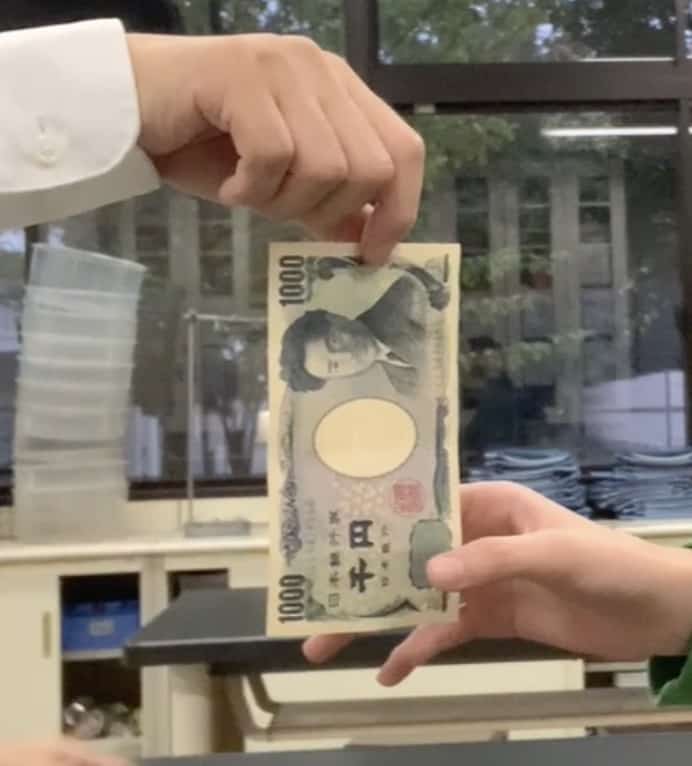Too Late Once You See It! Learn the Secret of the ‘0.2-Second Wall’ with the Banknote Catch Challenge (Reaction Speed)
Hi, I’m Ken Kuwako, your Science Trainer. Every day is an experiment!
Imagine a 1000-yen bill fluttering right in front of you. What if you could snatch it with your fingers? If you could, it’s yours! Wouldn’t you want to try a challenge like that? 😉 At first glance, it seems like a super easy game, right? But actually, this challenge hides an amazing secret about the human body and the slightly mischievous reality of the laws of physics.
The Bill Catch Challenge!
The rules are incredibly simple.
Person A gently holds the top of the bill, while Person B positions their fingers around the middle. Person A drops the bill without warning, and Person B tries to catch it. That’s it! If you catch it, you win the bill! …If someone told you that, you’d be pumped to try, wouldn’t you?


However, no matter how many times you try, you’ll likely fail. And there’s a good reason for that: this challenge is a scientifically “nearly impossible,” tricky experiment!
Why can’t you catch it? The “0.2 Second Barrier” revealed!
The secret lies in human “reaction time.” For us to react to something we see and take action, a series of processes is needed.
You see the bill fall (information input) → That information travels through your optic nerve to your brain → Your brain decides, “The bill fell! Move your fingers!” and sends a command 🧠 → The command travels through your motor nerves to your finger muscles → Your muscles contract, and finally, your fingers move (action) 💪
This entire sequence, even for the fastest reactors, is said to take about 0.2 seconds. So, in this seemingly “instant” 0.2 seconds, how far does the bill drop? This is where the law of physics, “free fall,” comes in. The distance an object falls due to gravity increases with the square of the time. In a slightly more complex formula, it’s written as y = 1/2 gt^2.
If we plug in the reaction time, t = 0.2 seconds, into this equation and calculate it…
y=1/2×9.8 m/s2×(0.2 s)2=0.196 m≈19.6 cm
Astonishingly, it drops approximately 19.6 cm! As you know, a 1000-yen bill is 15 cm long. This means that by the time your brain registers “It’s falling!” and your fingers start to move, the bill has already passed below your fingers. It’s too late once you see it with your eyes. That’s the scientific reason you can’t catch the bill!
Reaction Speed in Everyday Life
When we do this experiment in class, it’s always a huge hit! “Teacher, I almost had that one!” “Next time for sure!” Everyone’s eyes light up as they try, but the result is always the same. Seeing the students’ frustrated faces is quite enjoyable (of course, since it’s school, we can’t actually give them the bill!).
This “reaction speed” is actually involved in various aspects of our daily lives. For example, driving a car. In the brief moment it takes to detect danger and hit the brakes, the car continues to move (stopping distance). This is also due to reaction time. Also, in track and field, the starting gun (auditory) is used instead of a flash of light (visual) partly because auditory reaction time is slightly shorter.
What seems like a simple game is actually a profound science experiment that beautifully combines the mechanisms of the human body (biology) and the laws of motion (physics) . When you explore the “whys” hidden in everyday life, the world becomes even more interesting! Please also check out this article:
Inquiries and Requests
Discover the wonders and fun of science up close! We’ve compiled easy-to-understand fun science experiments you can do at home, along with tips. Feel free to search around!
・About the operator, Ken Kuwako: Click here
・For various requests (writing, lectures, experiment workshops, TV supervision, appearances, etc.): Click here
・Updates on articles are distributed on X!
![]() The Science Neta Channel streams experiment videos!
The Science Neta Channel streams experiment videos!


